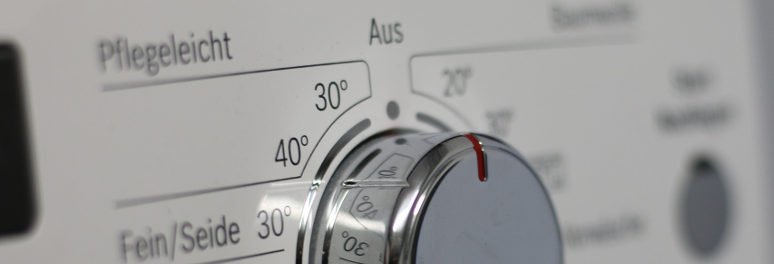
The best washing machines deliver top class cleaning every wash, are easy to use and efficient – and last for years. Surveys have shown that it’s not always the most expensive appliances that do the best job – and some cheaper models are better at removing stains. Tests based on important factors such as cleaning, washing, spinning, and energy use determine recommendations – take a look at washing machine features to look for here…
Considerations

You’ll need to take into account your individual needs before you make your purchase – how many loads of laundry do you wash a week, and whether you wear a lot of delicate fabrics and want appropriate wash cycles. If you wash lots of heavy items and heavily soiled clothes this will require a machine with extra-long washes and pre-soaking cycles – lightly soiled garments would benefit from a machine with quick wash options.
Remember to take into account the space you have to install your appliance – and make a note of the washing machine dimensions. Slim width washing machines are ideal for small spaces, and larger front loaders can be stacked with a matching dryer on top – getting two full-size appliances in the same space. Don’t forget to look at where your washing machine will go with regards to side opening lids on a top loading washing machine – you don’t want it to hit the wall every time it’s opened.
Features
- Wash settings
Sports programmes are designed to remove sweat marks and odours by having a longer wash cycle at a lower temperature to avoid damaging the fabric – and some machines will have a special programme that lets you wash trainers.
Quick wash settings are an option on most machines – these allow you to wash your clothes in a much shorter time – sometimes as little as 15 minutes. Bear in mind that the quickest washes may limit the wash load although some have a full load option but are specifically for lightly soiled garments.
Time delay allows you to load the washing machine and start it at a later time – this is a useful feature if you want to avoid noise in the early hours.
Pre-soaking facilities lets you soak the clothes for a specific amount of time before the wash cycle starts automatically.
- Spin cycles
The spin cycle is measured as revolutions per minute – the higher this figure is the better it will dry your clothes. For delicate clothes, the spin cycle is 300-500 rpm, and for heavier items, it can be anything from 1,000 – 1400 rpm. Wool requires a speed of around 600-800 rpm. A good spin speed will vary on the type of fabric you load into the machine – some will have a default spin speed for this – sometimes a higher spin speed can crease cottons which means more ironing, but as a general rule the faster the better as it reduces drying time.
- Temperature control
All washing machines have temperature settings so that you can remove stains in hotter water, or use cooler water to save money. Tests have found that washing at 20 degrees Celsius can save up to 66% on running costs compared with washing at 40 degrees, but will remove fewer stains. You need to think about how many options you want and in what format – many machines offer 30, 40, and 60 degree options whilst others have cotton and synthetic options for example.



